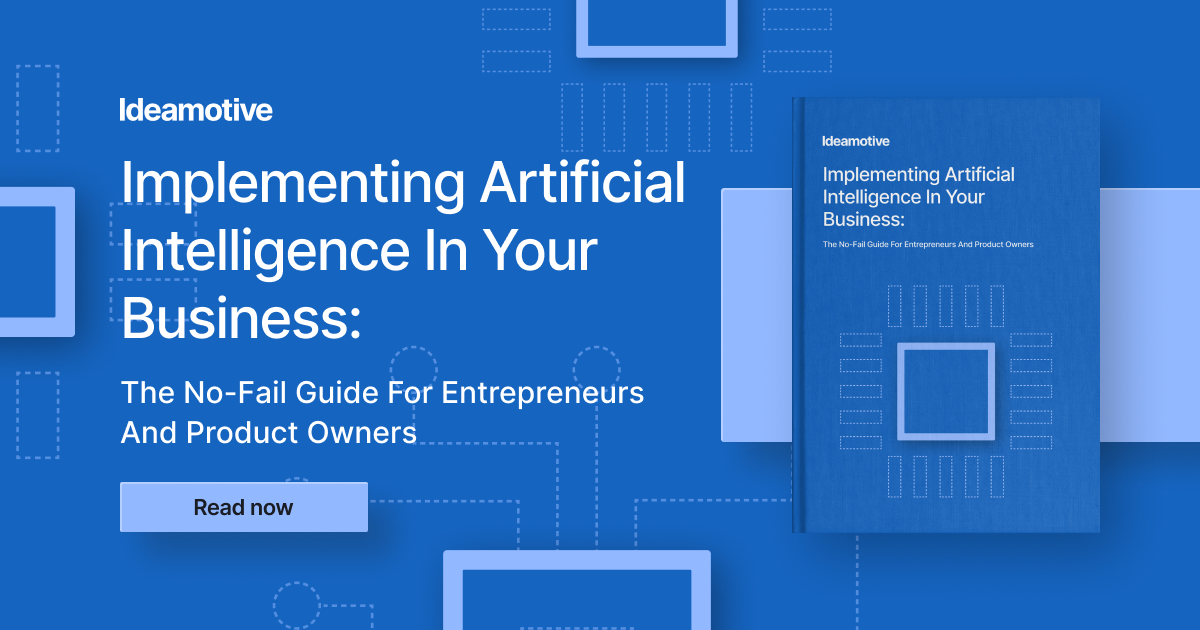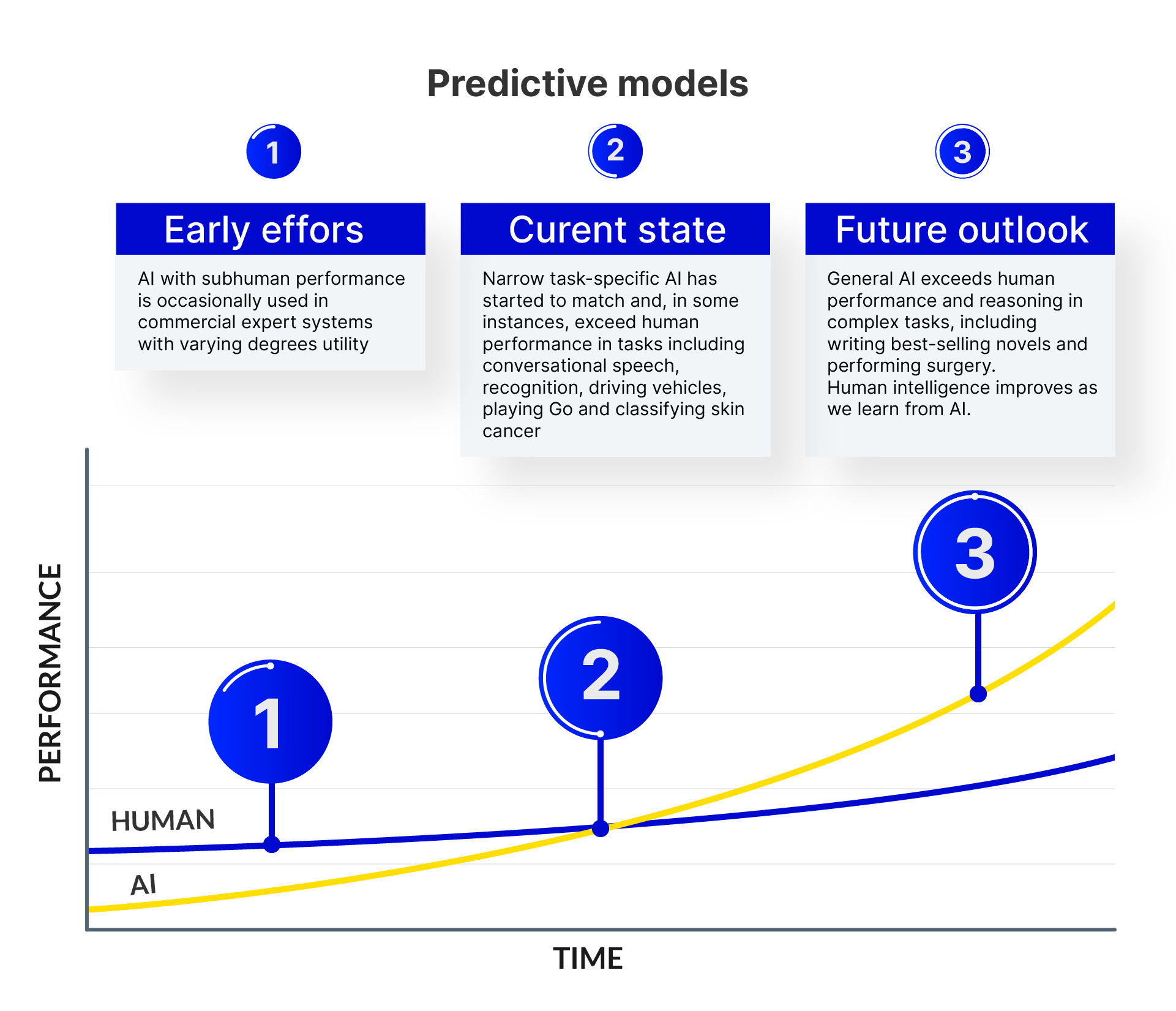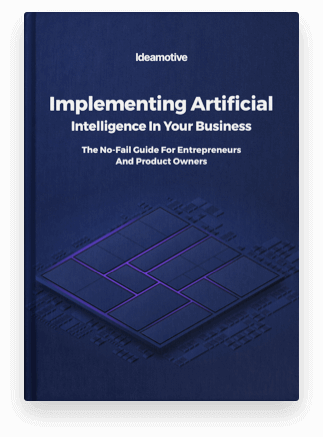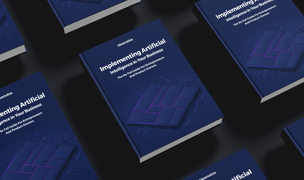AI has disrupted a range of industries and it still continues to accelerate funding, research, education, and technical achievements. With AI algorithms that are faster and cheaper to train, AI research is skyrocketing. According to the AI Index Report, between 1998 and 2018 the number of AI research papers has increased by 300%.
Machine learning algorithms play a key role in research problems since they help optimize costs and increase the productivity of complex R&D projects. Many innovations and R&D involve data-driven predictions, and ML can significantly simplify this process for researchers.
AI technologies enhance R&D in various fields, making it more attractive for investors and fundraising companies. Read on to find out why!

Why Invest in Research and Development?
The entrepreneurial activity has been amplified due to technological progress. In 2019, the global AI market size was valued at $40 billion and is anticipated to grow at a rate of 42.2% over the 2020-2027 period. Much of the investment in AI research and development activities comes from in-house R&D spending at large cash-flow digital companies such as Amazon, Baidu, and Google.
Apple constantly devotes about 30% of its profits to finance new technologies. Over the past 20 years, Apple has steadily increased its investment in research and development. By 2018, it amounted to $ 14.7 billion. The size of the budget allocated by Apple for R&D exceeded that of IBM by three times. Samsung has an annual research budget of approximately $500 million. Moreover, the company invests not only in its own institute but also in other institutes around the world in search of technologies that they could implement.
So, if you are planning a company's development strategy, AI consulting company can enhance your research and development process.
.png?width=1584&name=Python_%20The%20Definitive%20Business%20Guide%20-%20blog%20banner%201584x396%20(1).png)
AI-Driven Research and Development
In the modern world, innovation is one of the main driving forces of economic and social development. Innovative activity is characterized by a qualitative improvement of products sold on the market, the promotion of technologies used in practice to obtain competitive advantages, meet social needs, and generate profit. R&D has a huge impact on businesses. Let’s take a look at the following benefits R&D can bring to your company:
- You can get patents for newly created products and take a strong position on the market.
- R&D activities can decrease production costs and enhance product creation, allowing you to bring them to the market at a lower price and increase your customer base.
- R&D allows you to make your company flexible and ready for the integration of new ideas and processes. Thus, your business will be able to adapt to market changes effectively.
- Investors seek to invest in companies that take a dynamic approach to run their business, so showcase your company's innovative vision to potential investors.
- With extensive research and development background, you will be able to hire experienced and skilled workers from all over the world.
AI research and development technologies have a special place in the science world since they help solve many problems and boost innovation processes. In particular, AI & Ml resolve one of the most critical issues for researchers: data analysis. Around 2 million scientific articles are published annually. Think of loads of other assets cited by innovators in the R&D spectrum. Huge amounts of data make it difficult to find relevant information necessary for researchers. AI can quickly solve such issues with a single search and extract patterns.
This leads to another critical problem that R&D is currently faced with: efficiency. Improving efficiency is the most important result of AI’s impact on the R&D activities and data management environment. Utilizing machines to maintain the milestones of retrieving, organizing, and processing data, researchers are able to focus on more income-generated activities.
Finally, AI helps researchers discover data similarities: it helps make decisions by revealing insights that scientists have missed. Again, it is possible due to the fast and precise analysis of information. Insights built on the patterns reveal unseen associations and help researchers foresee the potentiality and its further development/application in the real world.
How AI and Machine Learning Are Advancing Research & Development
Artificial intelligence and machine learning appeared in the middle of the last century. In recent years, thanks to the emergence of new fundamental techniques, the availability of huge amounts of accumulated data, and the development of hardware capacities, interest in this technology has reached its peak. This means that now is the time of the greatest expectations when AI is considered a silver bullet: attempts are made to use it in all areas where traditional algorithmic methods can be dispensed with AI. AI research and development have an impact on the following:
- intelligent monitoring of infrastructures;
- collection, processing of large amounts of information;
- knowledge management;
- technical and medical diagnostic systems;
- creation of individual learning paths;
- behavioral analysis;
- smart platforms, etc.
Let’s take a look at some of the brightest examples of AI research and development and their outcomes.
AI & ML in Climate Change Research
The gases in the atmosphere create a global greenhouse effect, contributing to a slow but steady rise in the temperature of Earth. This can lead to an increase in methane fluxes since a change in ambient temperature by one degree accordingly changes the intensity of methane release in microbiological processes. The most dangerous sources of methane are methane hydrates, the reserves of which are enormous.
To foresee the consequence of human emissions, researchers require information on the atmospheric methane cycle. Thus, researchers from Rochester university collected data on methane that comes from the ocean and incorporated it with ML technologies. The algorithm recognized systematic models in methane data, which helped scientists foresee the emissions even in non-observed areas.
Besides a general idea of the world's methane allocations, the study disclosed another striking fact: shallow seaside waters account for about 50 percent of all ocean methane emissions. This is caused by methane's ability to "leak" from natural gas reserves onward continental margins. It also can be biologically restored from anoxic (oxygen-depleted) waste deposits at the bottom.
AI research and development provide many benefits for humanity and the environment. Verv, a British startup that helps optimize energy consumption, primarily for private consumers, utilizes AI-powered technology to enable users to reduce their energy bills. The idea of using AI to monitor energy consumption is not new. Some companies have been using this tool for quite a long time, particularly Google (to reduce energy consumption in the data center).
AI & ML in Investment Research & Trading
Banks and investment firms tend to partner with consulting firms to conduct research and monitor events affecting the financial market. Investment analysis for such companies is a fundamental component and the main task of analysts, traders, investors, and stock managers.
Some traders not affiliated with large corporations use platforms to trade and manage their research and trading activities independently. However, they often face the inability to study the entire volume of data submitted in the form of news, media reports, financial indicators of previous years, etc. AI-powered algorithms accelerate the capabilities to efficiently track large amounts of data and identify the most important trends and significant events in progressive companies.
AI research and development can bring value to investment research, but it depends on whether a company has access to big amounts of data it needs. For example, Google has access to a massive amount of data. The company uses ML algorithms from well-known AI technology providers. With the help of AI, traders and investment organizations analyze financial data and identify trends or relationships that are important to their sphere of influence.
The developer of AI-based software for business processes, the American company CognitiveScale, based on previous experience and current trends, considers AI to be best at automating investment research and generating personalized sales proposals.
Why is it so important?
Investment research and market analysis are essential for trading. Traders spend a lot of time collecting and analyzing financial events and news. These include the company's annual financial statements, earnings information, investor presentations, trading trends, news, social media posts, press releases, etc.
AI & ML in Geosciences
AI research and development activities are increasingly being adapted to quickly and economically solve geological problems.
Machine learning has already taken an important place in the mining industry due to its ability to reduce costs and improve project economics. It can become an indispensable tool in various fields of geology and mining. The new generation of geologists must be able to use it and interpret predictive models with it.
Machine learning is turning into an attractive tool in different fields of earth sciences; in particular, this refers to resource estimation. Six machine learning algorithms were utilized to foresee the presence of gold mineralization in a drill core based on geophysical data from the Lalor deposit, Manitoba, Canada.
Accumulation of quantitative data is well illustrated by the Tellus projects in Northern Ireland and southwest England. The projects were based on surveys aimed at accumulating geochemical and geophysical data. The usefulness of these interdisciplinary studies is revealed in the interpretation of large multi-dimensional datasets as a single system: an entirely quantitative portrayal of the geo-environment as a whole.
Machine learning systems have a number of distinct advantages over conventional methods that are of greater importance for this science:
- Algorithms can process large volumes of input variables, identifying patterns in complex multidimensional data sets, whereas the human brain simultaneously analyzes no more than two or three relationships.
- In the case of a representative training dataset, ML algorithms can independently identify patterns, thereby providing an objective assessment of the information.
- The trained algorithm has a known accuracy, which can be determined from the obtained analysis results. The estimated accuracy of the model and its parameters’ fluctuations are quantitative indicators; they can be used in the decision-making process.
- The trained algorithm can quickly process large amounts of data within a few minutes to represent their interpretation; this is usually impossible for a human.
AI & ML in Medical Research
Machine learning tools are now widely utilized in medical and pharma R&D. AI research and development labs provide healthcare with accessible, structured patient data from a variety of databases and instant development of methods for analyzing large amounts of data.
The method of searching for new antibiotics with AI is more effective and cheaper than traditional methods. Artificial intelligence has allowed scientists at the Massachusetts Institute of Technology (MIT) to make a unique discovery in the history of medicine - new antibiotics. The researchers have created a neural network that has found several suitable antibiotics among millions of candidates, including halicin, which can defeat superbugs.
AI can also be useful for radiology research to identify correlations between a wide variety of clinical, histological, radiological, laboratory, and genetic data. The integration of all personal medical data of a patient with an electronic medical record will allow establishing a correlation between currently isolated indicators such as the number of steps per day and coronary calcium. A new era of highly accurate predictive models and personalized medicine based on each patient’s data will come.

Source: US National Library of Medicine
AI & ML Investigates Space
Artificial intelligence helps scientists research space, discover new planets, observe the earth, and help predict natural disasters.
AI research and development activities have shown particular effectiveness in space research. The Kepler telescope, equipped with an AI algorithm, was launched into space in March 2009 and has been in operation for almost a decade, during which time astronomers have found more than 2,600 exoplanets with its help. For example, in late 2017, it helped find the solar system's twin, discovering the planets Kepler 80g and Kepler 90i in the Kepler-90 star system in the constellation Draco. Researchers utilize deep learning at the NCSA to discover and investigate gravitational waves generated by extensive stellar events like the interference of black holes.
The power of machine learning algorithms lies in the ability to study millions of images in a matter of moments, registering any changes on the fly, for example, in the movement of atmospheric fronts. In addition, unlike humans, artificial intelligence is not prone to errors. This is especially important when tracking natural disasters.
AI research and development systems play an equally important role in the operation of probes exploring deep space. Specialized algorithms process huge amounts of data, studying the characteristics of alien worlds. AI compares them to the programmed values of a potentially habitable space object to determine the likelihood of habitability for another exoplanet.
Intel has recently launched the AI-based satellite into space. It is powered by the visual processor that will study the Earth's surface and participate in tests of the inter-satellite communication system. The AI-furnished satellite can analyze the data from the high-resolution camera installed on it using machine learning algorithms. It is reported that thanks to AI, the device will be able to detect fires, illegal ships, or environmental disasters. In addition, the satellite can record the degree of soil moisture and monitor the melting of ice.
Final Word
AI & ML technologies invade new spheres and conquer new heights year after year. If you want to hire AI engineers, Ideamotive has dozens of veteran data scientists who help streamline processes and implement intelligent solutions for companies across industries. Contact us, and we will provide you with a perfectly matched talent.



.png?width=1584&name=Python_%20The%20Definitive%20Business%20Guide%20-%20blog%20banner%201584x396%20(1).png)



-1.png)




